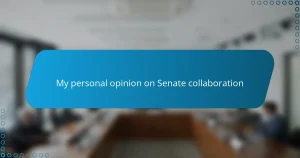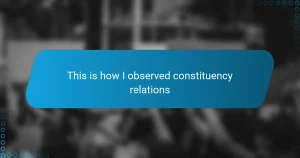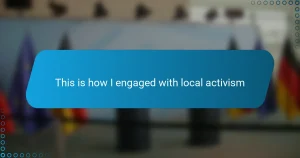Key takeaways
- Grassroots movements thrive on community connection and personal stories, fostering a sense of ownership and urgency.
- The adaptability of grassroots activism allows for real-time evolution based on participant feedback, enhancing democratic engagement.
- Effective evaluation considers both tangible outcomes, like policy changes, and less visible impacts, such as community empowerment and narrative shifts.
- A blended approach to assessment—utilizing surveys, in-person observation, and digital metrics—provides a comprehensive understanding of grassroots initiatives.
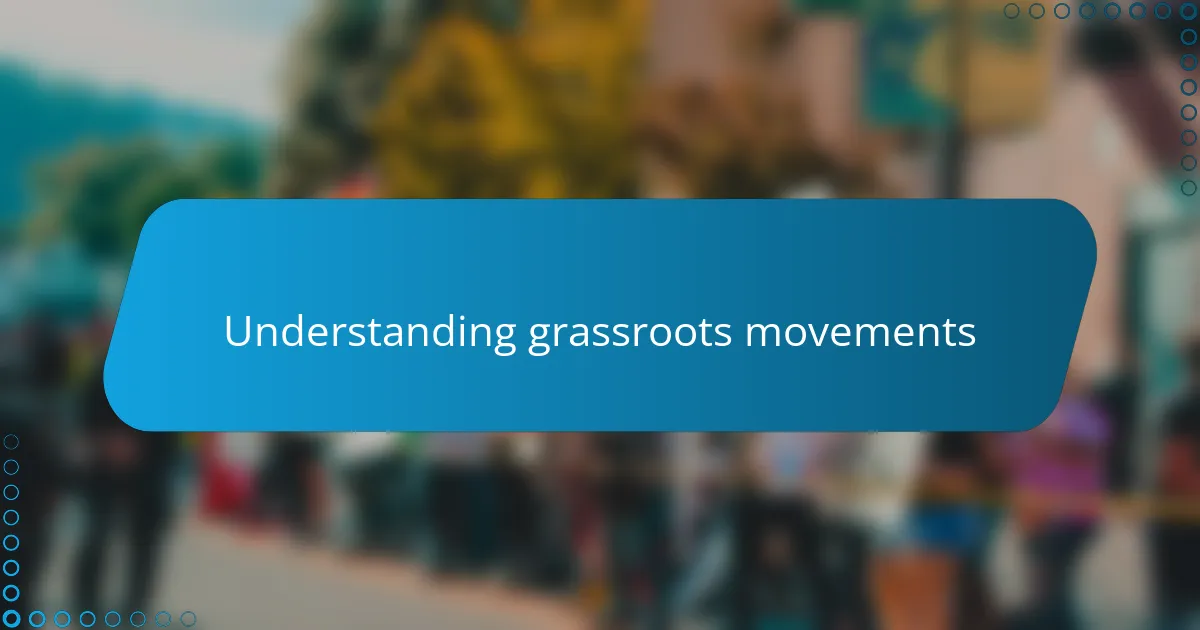
Understanding grassroots movements
When I first encountered grassroots movements, I was struck by their raw energy and genuine passion. These are not top-down initiatives but rather organic efforts fueled by everyday people who feel compelled to make a difference. Have you ever wondered what drives someone to step outside their comfort zone and rally for change?
To me, understanding grassroots movements means recognizing their power lies in community connection. They tap into shared experiences and local concerns, creating a sense of ownership and urgency that can’t be manufactured in boardrooms. I’ve seen how this authenticity resonates deeply, often inspiring more commitment than traditional political campaigns.
What really stands out is their adaptability. Grassroots efforts evolve based on real-time feedback from the people involved, reflecting a dynamic and democratic approach to activism. This makes them unpredictable, sometimes messy, but always rooted in the lived realities of those they represent.
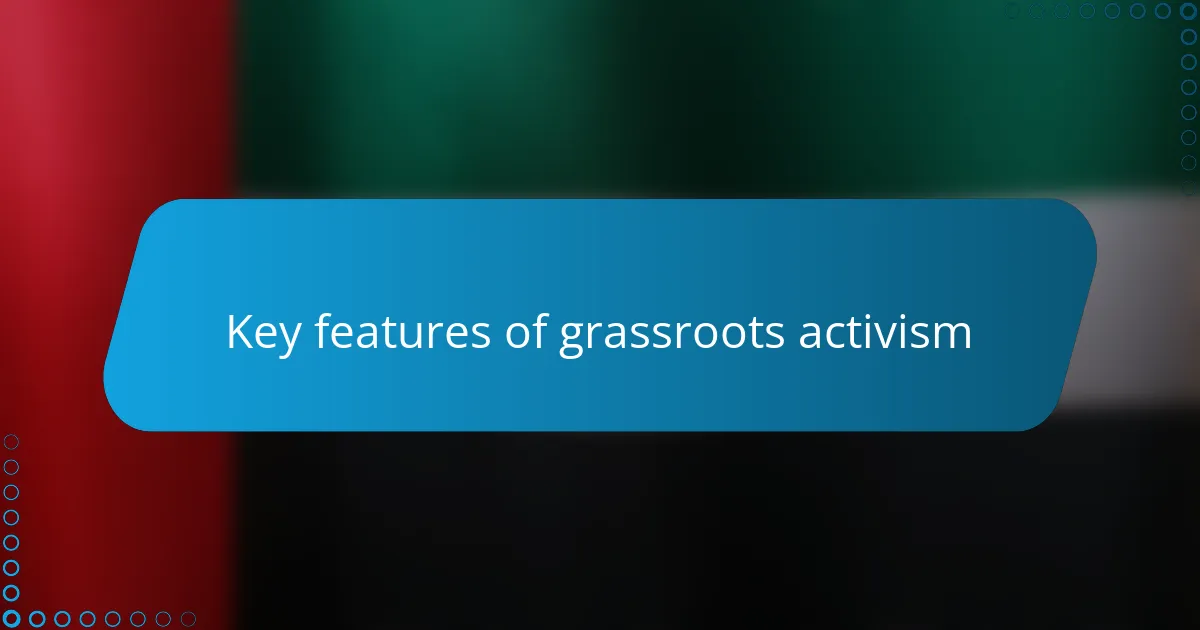
Key features of grassroots activism
One key feature I’ve noticed in grassroots activism is its deep reliance on personal stories. When I attended a local rally, what moved me most wasn’t the speeches but the voices of neighbors sharing their struggles. Have you experienced how a single heartfelt story can suddenly make an issue feel urgent and real?
Another aspect that struck me is the emphasis on collective action rather than individual heroism. Grassroots movements thrive when people come together, pooling their time, skills, and passion. It’s not about one leader commanding the crowd but a network of empowered participants pushing forward in unison.
Lastly, grassroots activism often builds from the ground up with limited resources, relying on creativity and persistence. I recall organizers using simple tools—a flyer, a phone call, a social media post—to spark momentum. This resourcefulness reminds me that powerful change doesn’t always need big budgets, just big commitment.
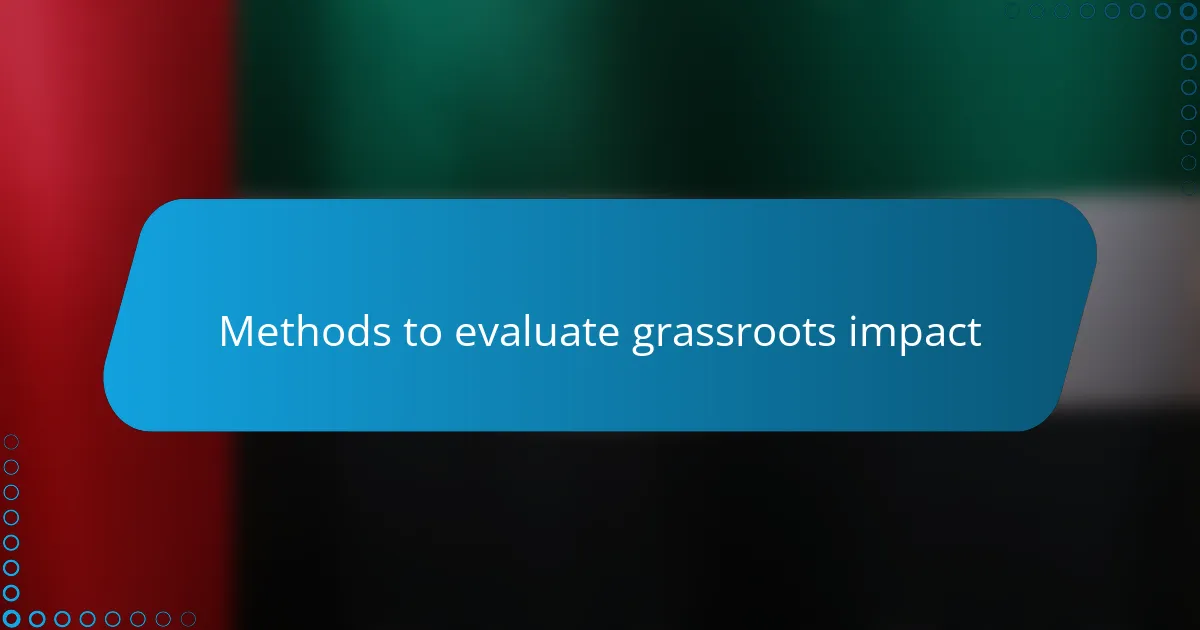
Methods to evaluate grassroots impact
Evaluating the impact of grassroots movements isn’t always straightforward. I’ve found that looking at tangible outcomes—like policy changes or shifts in public opinion—helps, but it’s equally important to gauge less visible effects, such as community empowerment and changes in local narratives. Have you ever noticed how a small group’s confidence can ripple out, inspiring others even without immediate headlines?
Tracking participation rates offers another valuable insight. When I volunteered for a grassroots campaign, the growing number of attendees at meetings and events was a clear sign that momentum was building. But numbers alone don’t tell the whole story—understanding who is showing up and why reveals the depth of the movement’s reach.
Lastly, I pay close attention to the ways movements harness communication. From personal stories shared in town halls to viral social media posts, these voices amplify messages and connect people. Observing the spread and resonance of these narratives tells me a lot about the movement’s ability to shape hearts and minds beyond mere statistics.
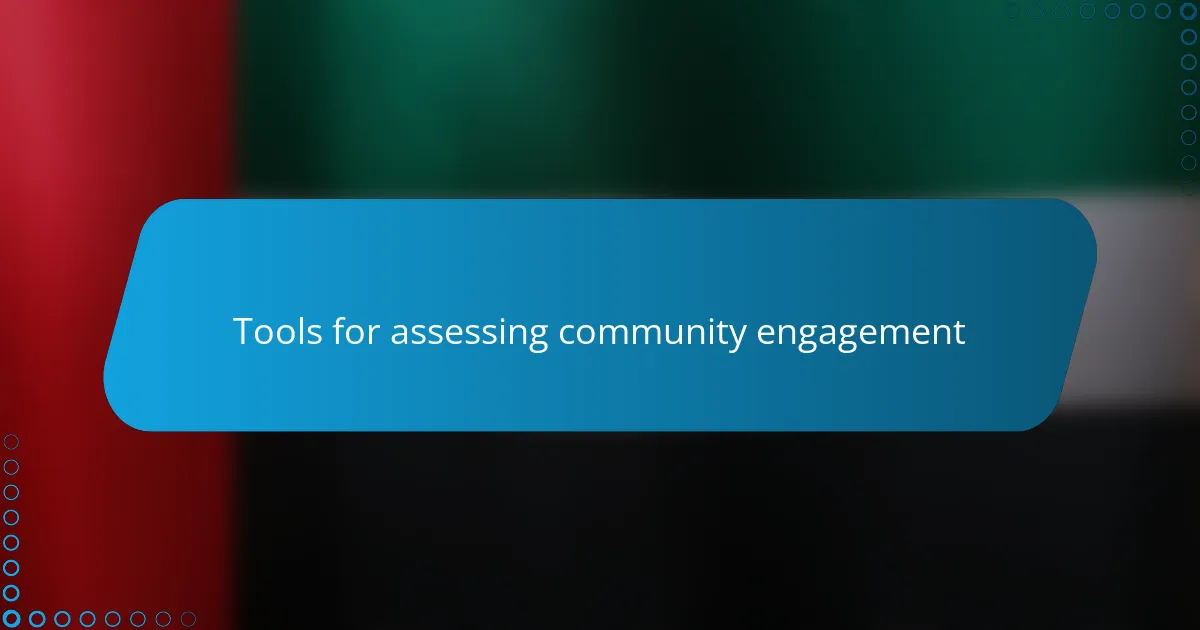
Tools for assessing community engagement
One tool I rely on heavily is community surveys. When I facilitated one during a neighborhood initiative, the feedback revealed not just opinions but emotions—what people truly cared about. Don’t you find it fascinating how asking a few targeted questions can unlock layers of community sentiment that numbers alone might miss?
Social media analytics also provide a window into engagement. I once tracked the shares and comments on a local campaign’s posts and noticed patterns that showed which messages resonated most deeply. Have you seen how a single viral story can ignite conversations and bring people together in ways traditional outreach sometimes can’t?
Beyond digital metrics, I also value attending community meetings and listening firsthand. Being present allows me to sense the energy and commitment in the room, something data can’t fully capture. Isn’t there something uniquely powerful about hearing voices, seeing faces, and feeling collective momentum up close?
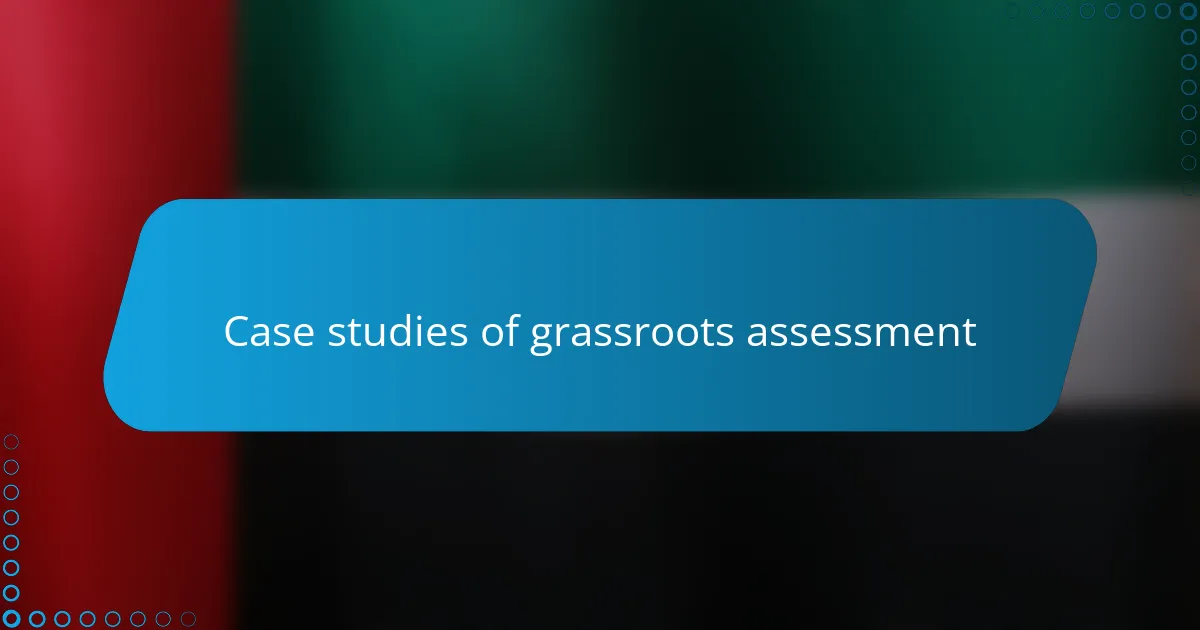
Case studies of grassroots assessment
One case that stays with me is a small environmental group in the Midwest where I observed how assessing their impact went beyond statistics. Instead of just counting attendees, I looked at how local stories about clean water began shifting conversations at town halls. It made me realize that sometimes, the quiet changes in community dialogue matter just as much as headline-grabbing victories.
Then there was a grassroots campaign for education reform where I tracked volunteer involvement over several months. What struck me wasn’t just the rising numbers but how those joining brought diverse skills—from organizing to storytelling—that strengthened the movement’s foundation. Have you ever noticed how the right mix of people can transform scattered efforts into a cohesive force?
Finally, I recall a series of social media-driven protests where engagement metrics initially seemed modest. Yet, by digging into the comments and shares, I saw passionate voices sparking offline action in multiple cities. It taught me that influence isn’t always about volume but the depth of connection those messages create within communities.
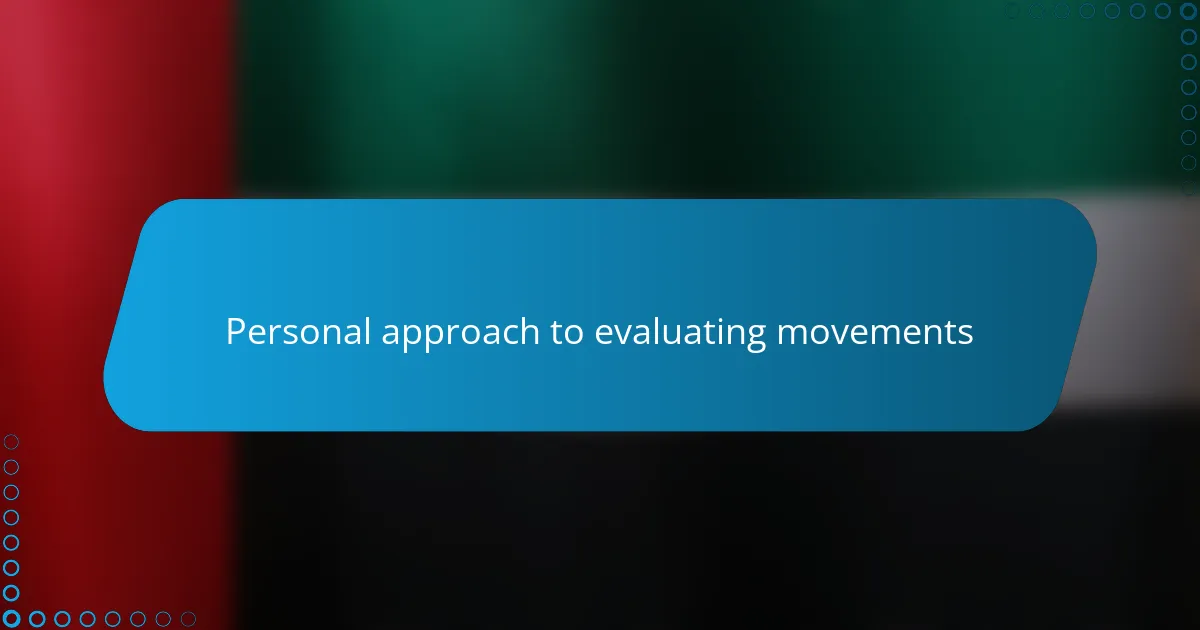
Personal approach to evaluating movements
When I assess grassroots movements, I start by tuning into the human element—the stories that fuel the passion behind the cause. I’ve found that these narratives offer more than just context; they reveal why people care deeply enough to take action. Have you ever caught yourself moved not by data, but by a single person’s heartfelt experience?
I also look at the movement’s ability to build genuine connections over time. From my experience, it’s not just about gathering numbers but about fostering trust and a shared sense of purpose that keeps people coming back. When I see this kind of sustained engagement, I know the movement isn’t just a fleeting spark but a growing force.
Finally, I consider how adaptable the movement is when challenges arise. I remember watching a local initiative pivot its strategy mid-campaign based on community feedback, which impressed me deeply. This kind of flexibility often shows a movement’s resilience and commitment to truly representing its base. Don’t you think that willingness to listen and learn is what separates lasting movements from transient ones?
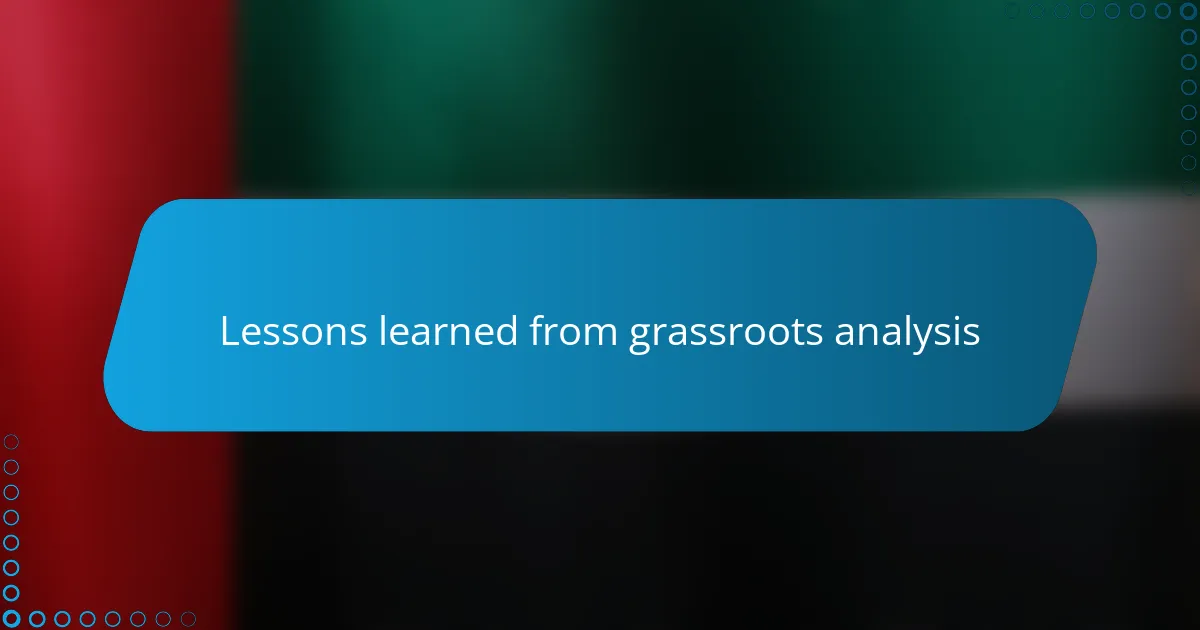
Lessons learned from grassroots analysis
Reflecting on my analysis, one key lesson stood out: the power of patience. Grassroots movements often don’t deliver immediate results, but the slow-building shifts in community mindset reveal themselves over time. Have you ever witnessed a change so subtle at first that only hindsight made its impact clear? That’s the kind of lasting influence grassroots efforts quietly cultivate.
Another insight I’d share from experience is the importance of context in assessment. I learned not to rely solely on numbers or headlines. Instead, I sought out the nuanced stories behind the statistics—those moments when someone’s life genuinely changed or when a collective voice found new strength. It’s in those details that the true value of grassroots activism shines.
Lastly, I realized that no single tool or method captures the full picture. Combining surveys, in-person observation, and digital tracking gave me a richer, multifaceted view. Doesn’t it make sense that understanding a movement requires both data and human connection? That blend is essential to appreciating the depth and vitality of grassroots action.
